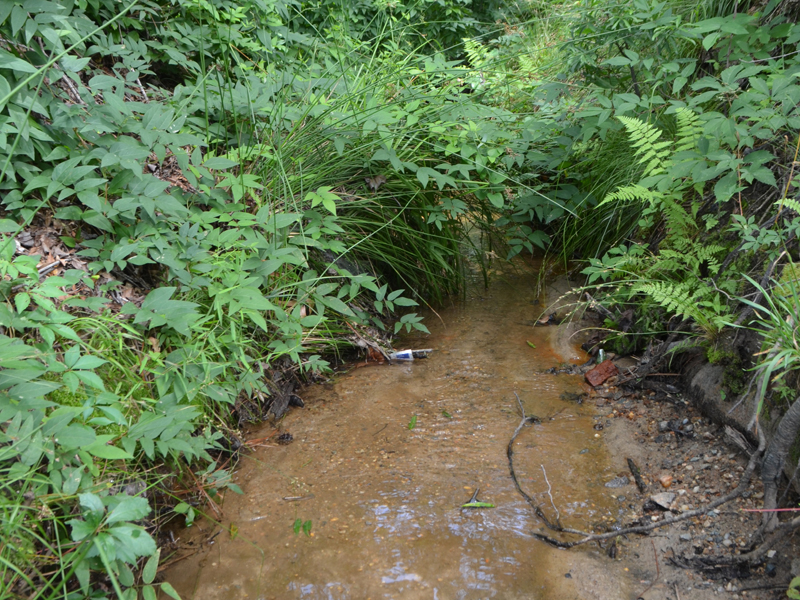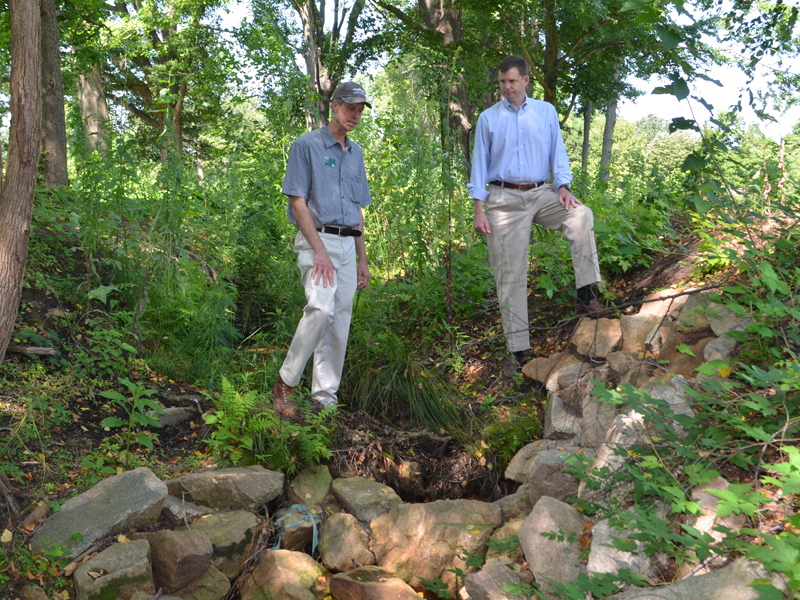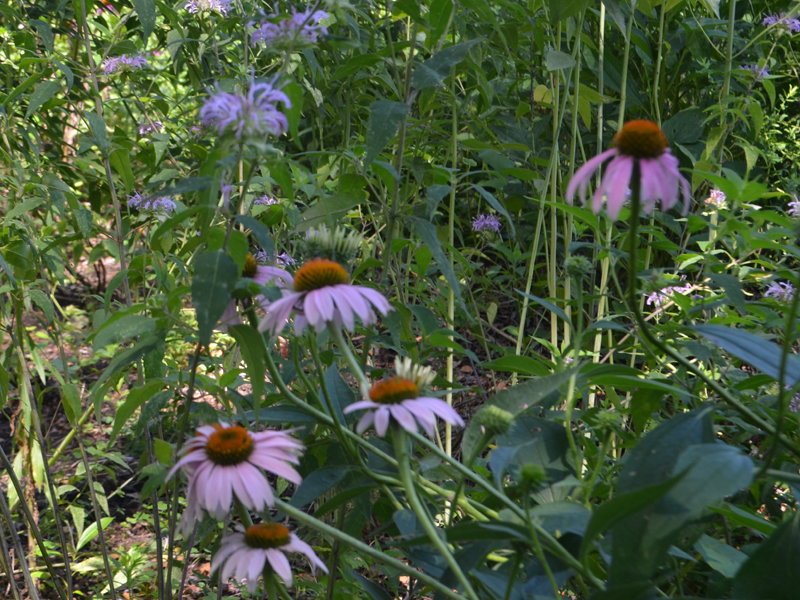Good Gully: Stream Restoration Helps Environment
As you wind your way through the entrance to Lewis Ginter Botanical Garden, a stream cuts through the lawn to your left. It has a naturalistic feel, with trees and small shrubs growing along the sides. The purpose now is functional – an area for run-off from nearby neighborhoods, streets and parking lots – but the vision is for this gully to teach us all some important lessons.

The Glen Stream Restoration project will transform a stream near the Garden’s entrance. It will be an environmentally friendly resource – a gully.
Usually a trickle at the bottom of steep embankments, this stream becomes a charging, churning force after major rainstorms. We plan to engineer a landscape solution that will slow the water. For instance, this will allow it to be absorbed in a way that will benefit the soil, the plants that live there and the environment. Called the Glen Stream Restoration, the gully project is partially funded by Dominion Energy.
How could erosion be affecting you?
Meanwhile, if you live in an urban environment, you may be familiar with similar situations in your own neighborhoods. The intermittent water flow exacerbates erosion, with the crumbling sides sending sediment downstream and harming water quality. As the gully deepens, the plant habitat also changes, challenging natives and allowing more adaptable non-natives to move in. Ever-changing conditions make it difficult for aquatic plants and animals to establish communities.

(Left to right) The Garden’s Horticulture Director John Morse and Dominion Energy’s Manager for Regional, State and Local Affairs (Virginia) James Beazley, examine the gully site.
The Glen Stream Restoration Project will be a demonstration landscape, which means guests, teachers, and students will be able to learn from the Garden’s example. As the project unfolds, issues related to water quality, wetland habitat and native plant communities will be studied and shared. In addition, it’s also a chance to work with many community partners, educators and volunteers.
What to expect in the process
We’re still in the early stages of creating a gully, but the idea is to use a relatively new concept called Regenerative Stormwater Conveyance. The geography of the stream will be altered to create a more meandering path to slow down the water and allow particulates to settle. Ways to do that involve raising the stream bed, making a more gentle slope, cutting a curved channel, and building a floodplain alongside the stream. Moreover, this will allow native plants to stabilize the stream sides. The stormwater run-off will be mitigated and the water will be filtered by the soil and the plants. In addition, plant, insect and animal diversity will return and the site aesthetics will improve.
When you visit the Garden this spring, we invite you to notice the Glen Stream. We hope you’ll follow along as we plan and install the changes over the next several years.
